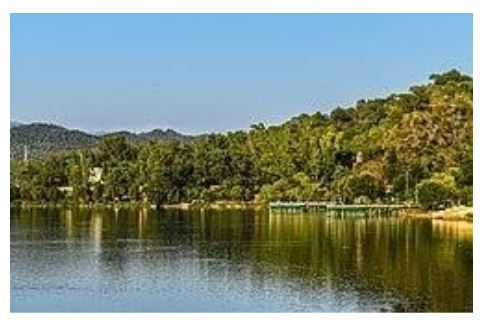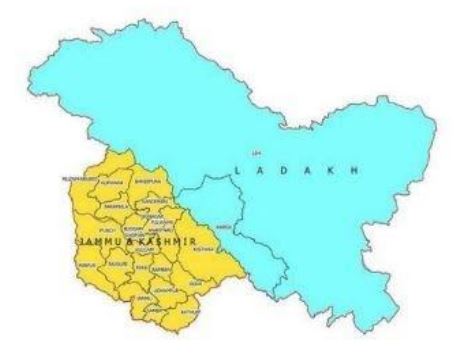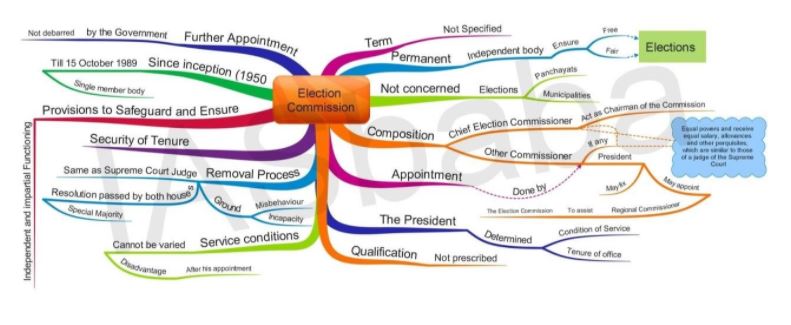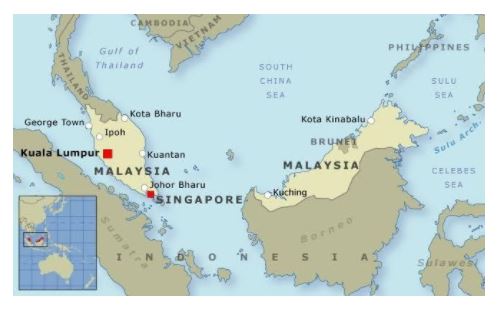IASbaba's Daily Current Affairs Analysis
Archives
(PRELIMS + MAINS FOCUS)
Open API Service in Aarogya Setu
Part of: GS-Prelims and GS-III – Technology
In News:
- The government has announced a new feature ‘Open API Service’ for Aarogya Setu app.
Key takeaways
- Through the new feature, organizations can take informed decisions regarding the presence of employees in office and the need to explore work from home.
- Thus, risk of contracting is reduced.
- Entities which are registered in India and have more than 50 employees can avail this feature.
- No other personal data except the user’s name and status shall be provided through the API.
Important value additions
Application Programming Interface (API)
- It is an interface that can be used to program software that interacts with an existing application.
- Open Source API is made publicly available to software developers.
APIs Vs. Web Services
- Every web service is an API but not every API is a web service.
- While APIs can be online or offline, web services must use a network.
- While APIs can use any protocols or design styles, web services usually use specific protocols.
- Web services are less prone to hacking than API.
BIS Draft Standard for Drinking Water
Part of: GS-Prelims and GS-III – Infrastructure: Resources
In News:
- Recently, the Bureau of Indian Standards (BIS) has prepared a draft standard for the supply system of piped drinking water.
- Title: ‘Drinking water supply quality management system — requirements for piped drinking water supply service’.
Key takeaways
- It outlines the process of water supply, from raw water sources to household taps.
- The draft standard is expected to make the process of piped water supply more uniform.
- It has been developed keeping in view the Centre’s Jal Jeevan Mission.
Important value additions
Jal Jeevan Mission
- It aims for providing safe and adequate drinking water to all rural households by 2024 through tap connections.
- Ministry: Jal Shakti Ministry
The Bureau of Indian Standards
- It is the national Standards Body of India.
- Ministry: Ministry of Consumer Affairs, Food & Public Distribution
- Act: Bureau of Indian Standards Act, 1986
Sustainable Finance Collaborative launched
Part of: GS-Prelims and GS-III – Economy
In News:
- Sustainable Finance Collaborative was recently launched.
- Launched by: The Department of Economic Affairs (DEA), Ministry of Finance in collaboration with the United Nations Development Programme India.
Key takeaways
It included dialogues on:
- barriers to deploying new and innovative financing such as impact investing
- Role of blended finance instruments
- Green finance instruments for sustainable development
- Need for taxonomy of environmentally sustainable activities
Great Andamanese Tribe
Part of: GS-Prelims and GS-I – Tribes
In News:
- Recently, the Great Andamanese tribe were in news when some of its members tested positive for COVID-19.
- They are one of the Particularly Vulnerable Tribal group (PVTG) of the region.
- This is one of the first cases of COVID-19 infection among the endangered PVTGs of the region.
Important value additions
The Great Andamanese
- They are one of five PVTGs that reside in the Andamans archipelago.
- They speak Jeru among themselves.
- Total population is just 74.
- The five PVTGS residing in Andamans are Great Andamanese, Jarawas, Onges, Shompens and North Sentinelese.
Particularly Vulnerable Tribal Groups (PVTG)s
- Concerned Ministry: Ministry of Home Affairs (MHA) & Ministry of Tribal Affairs (MTA)
- 75 tribal groups have been categorized as PVTGs by MHA.
- They reside in 18 States and UT of A&N Islands.
- MTA implements “Development of Particularly Vulnerable Tribal Groups (PVTGs)” scheme exclusively for them.
- Under the scheme, Conservation-cum-Development (CCD) Plans are to be prepared by each State/UT for their PVTGs based on their need assessment.
- The plans are then appraised and approved by the Project Appraisal Committee of the Tribal Affairs Ministry.
- Sectors for which activities are undertaken: Education, Health, Livelihood and Skill Development, Agricultural Development, Housing & Habitat, Conservation of Culture etc.

Image source: Click here
Comprehensive Manser Rejuvenation and Development Plan reviewed
Part of: GS-Prelims and GS-III – Environment
In News:
- The ‘Comprehensive Manser Rejuvenation and Development Plan’ was recently reviewed.
- Objective: To initiate the process for development, rejuvenation and beautification of Manser Wetlands, Jammu and Kashmir.

Image source: Click here
Key takeaways
- The plan aims at increasing tourist footfall and boosting the social economic development of Jammu region.
- Surinsar-Manser Lakes were designated as Ramsar Convention in November 2005.
New rules for administration notified in the Union Territory of J&K
Part of: GS-Prelims and GS-II – Polity & Governance
In News:
- New rules for administration were recently notified in the Union Territory of J&K.
- Ministry: The Union Home Ministry.
- The new rules specify the functions of the Lieutenant-Governor (L-G) and the Council of Ministers (CoM).

Image source: Click here
Key takeaways
- Police, public order, All India Services and anti-corruption will fall under the executive functions of the L-G.
- The CM or CoM will have no say in their functioning.
- Matters which affect the interest of any minority community shall essentially be submitted to the L-G after intimating the CM.
- The CoM, led by the CM, will decide service matters of non-All India Services officers, proposal to impose new tax, land revenue, reconstituting departments or offices and draft legislation.
- However, in case of difference of opinion between the L-G and a Minister, when no agreement could be reached even after a month, the decision of the L-G shall be deemed to have been accepted by the CoM.
Barn Owls being used for controlling damage to coconut yield
Part of: GS-Prelims and GS-III – Biodiversity
In News:
- Pilot project has started on Biological Control of Rodents (Rats) by Using Barn Owls in Kavaratti Island, Lakshadweep.
- Recent studies revealed the widespread damage caused by rats to the island’s coconut yield and economy.
- Coconut is an important cash crop for the islands, but the rodents account for 30 to 40% of the yield loss.
- Total production stood at 8.76 crore nuts in 2017-18.
Important value additions
Barn Owl
- Scientific name: Tyto alba.
- Distribution: It is the most widely distributed species of owl except in Polar and desert regions, north of the Himalayas, most of Indonesia, and some Pacific islands.
- Nearly all of their food consists of small mammals which they locate by sound.
- IUCN status: Least Concern.
- Cultural significance: The Barn Owl is respected as the acolyte of the Goddess Chamunda in Karnataka. In Bengal, it is revered as the carrier of Lakshmi, the deity of wealth.
- Barn owls have been recruited instead of cats or rat snakes because the rats in the Lakshadweep Islands practically live on treetops.
- Using chemical agents is impossible since Lakshadweep practises organic agriculture.

Image source: Click here
Possibility of Common Electoral Roll discussed
Part of: GS-Prelims and GS-II – Polity & Governance
In News:
- Recently, the possibility of having a common electoral roll for elections to the panchayat, municipality, state assembly and the Lok Sabha were discussed by the Indian Central government.
Important value additions
- In many states, the voters’ list for the panchayat and municipality elections is different from the one used for Parliament and Assembly elections.
- The supervision and conduct of elections are supervised by two authorities — the Election Commission (EC) and the State Election Commissions (SECs).

- EC: Supervise elections to the President and Vice-President offices, and to Parliament, the state assemblies and the legislative councils.
- SECs: Supervise municipal and panchayat elections.
- They are free to prepare their own electoral rolls for local body elections, and this exercise does not have to be coordinated with the EC.
- Each SEC is governed by a separate state Act.
Do you know?
- Currently, all states, except Uttar Pradesh, Uttarakhand, Odisha, Assam, Madhya Pradesh, Kerala, Odisha, Assam, Arunachal Pradesh, Nagaland and the Union Territory of J&K, adopt EC’s rolls for local body polls.
- The pitch for a single voters list is not new.
- The Law Commission recommended it in its 255th report in 2015.
- The EC too adopted a similar stance in 1999 and 2004.
14th India-Singapore Defence Policy Dialogue held
Part of: GS-Prelims and GS-II – International Relations
In News:
- The 14th India-Singapore Defence Policy Dialogue (DPD) was held via video conferencing.
- Discussions on a number of issues of bilateral defence engagements between India and Singapore were held.
- The Implementing Arrangement on Humanitarian Assistance & Disaster Relief (HADR) between India and Singapore was also signed.

Image source: Click here
Miscellaneous
World Urdu Conference
- World Urdu Conference was recently inaugurated by Union Education Minister.
- Organised by: National Council for Promotion of Urdu Language (NCPUL)
- Place: New Delhi.
DGNCC Mobile Training App launched
- The Directorate General National Cadet Corps (DGNCC) Mobile Training App was recently launched.
- Ministry: Defence Ministry
- The App will assist in conducting countrywide online training of NCC cadets.
- Aim: Providing NCC cadets entire training material on one platform.
(MAINS FOCUS)
INTERNATIONAL / ECONOMY
Topic: General Studies 2,3:
- Effect of policies and politics of developed and developing countries on India’s interests
Supply Chain Resilience Initiative
Context: With COVID-19 and trade tensions between China & USA threatening supply chains or actually causing bottlenecks, Japan has mooted the Supply Chain Resilience Initiative (SCRI) as a trilateral approach to trade, with India and Australia as the other two partners.
What does supply chain resilience mean?
- When assembly lines are heavily dependent on supplies from one country, the impact on importing nations could be crippling if that source stops production intentionally (economic sanction) or unintentionally (natural disaster)
- Example: Japan imported $169 billion worth from China, accounting for 24% of its total imports. Japan’s imports from China fell by half in February 2020 that impacted Japan’s economic activity.
- In the context of international trade, supply chain resilience is an approach that helps a country to ensure that it has diversified its supply risk across a clutch of supplying nations instead of being dependent on just one or a few
What is Objective of SCRI?
- The two-fold objective of the Japanese proposal is to attract foreign direct investment to turn the Indo-Pacific into an economic powerhouse and to build a mutually complementary relationship among partner countries.
- Under the proposal, the aim is to work out a plan to build on the existing bilateral supply chain networks.
- India and Japan already have an Indo-Japan Industrial Competitiveness Partnership that deals with locating Japanese firms in India.
- After an understanding emerges among India, Japan and Australia, the initiative could also be thrown open for the ASEAN countries.
Where does Australia stand?
- China has been Australia’s largest trading partner and accounts for 32.6% of Australia’s exports, with iron ore, coal and gas dominating the products shipped.
- But relations including trade ties between Australia & China have been deteriorating for a while now.
- China banned beef imports from four Australian firms in May 2020, and levied import tariffs on Australian barley.
- In June 2020, China’s education Ministry warned its students aspiring to study or already studying in Australia, of ‘rising racism’ in that country.
- Australia, Japan and India are already part of another informal grouping, the Quadrilateral Security Dialogue, or the Quad, which includes the U.S.
What does India stand to gain, or lose?
- It is significant that Japan has taken the initiative to include India despite India having pulled out of the RCEP that Japan helped stitch together
- Following the border tension between India and China, partners such as Japan have sensed that India may be ready for dialogue on alternative supply chains.
- But an internal push to suddenly cut links with China would be impractical
- China’s share of imports into India in 2018 (considering the top 20 items supplied by China) stood at 14.5%,
- Chinese supplies dominate segments of the Indian economy
- In areas such as Active Pharmaceutical Ingredients for medicines such as paracetamol, India is fully dependent on China.
- In electronics, China accounts for 45% of India’s imports
Way Forward
- SCRI initiative is at the strategy stage and has some way to go before participants can realise trade benefits
- Over time, if India enhances self-reliance or works with exporting nations other than China, it could build resilience into the economy’s supply networks.
- Also, India needs to accelerate progress in ease of doing business and in skill building
Connecting the dots:
- Regional Comprehensive Economic Partnership
- US-China Trade War
ECONOMY/ GOVERNANCE
Topic: General Studies 3:
- Indian Economy and issues relating to planning, mobilization, of resources, growth, development and employment.
- Effects of liberalization on the economy
Tractor industry
Context: Tractor sales shooting up by 38.5% in July 2020 have triggered quite a buzz in the market.
Evolution of the tractor industry in India
- The history of tractors in Indian agriculture goes back to the introduction of steam tractors in 1914 for the reclamation of wastelands in Punjab.
- After Independence, the Central Tractor Organisation (CTO) was set up to promote the use of tractors in agriculture.
- In 1951, the tractor industry was included in the “Core Sector” of planned economic development, and was also placed under the “licence raj”.
- Interestingly, even until 1960, the demand for tractors was being met entirely through imports.
- It was only in 1961 that two companies, Eicher Tractors Ltd. (in collaboration with German Company) and Tractors and Farm Equipment Ltd. (TAFE) (in collaboration with UK Company) started manufacturing tractors in India.
- In 1965, Mahindra and Mahindra jumped in the fray in collaboration with the International Tractor Company of India.
- As a result, domestic production of tractors rose from 880 units in 1961-62 to 5,000 units in 1965-66
- The Green Revolution gave a fillip to the demand for tractors to meet the pressing need of completing timely operations in agriculture. So, the government decided to invite additional entrepreneurs into tractor manufacturing in 1968.
- In 1974, Punjab Tractors Ltd became the first public sector company to manufacture tractors with indigenous technology. In 1982, the indigenous Mahindra brand of tractors was also launched.
- However, it was only in 1991 that tractor manufacturing was completely de-licenced in India. It increased competition, improved quality, and offered more choices to the farmers
Status of Tractor Industry
- India is the largest manufacturer of tractors (excluding sub 20 horsepower (hp) belt-driven tractors used in China), followed by the US and China.
- Tractor production in India shot up from 139 thousand in 1991 to almost 900 thousand units in 2018-19
- Indian Company Mahindra & Mahindra (M&M) has emerged as the largest player with a 40 per cent share of the market (FY 2019)
- In 2018-19, India exported almost 90,000 tractors to various countries ranging from the US to African nations.
- This speaks of an “atmanirbhar” and competitive industry.
What contributed to this success of the tractor industry?
- First, the de-licencing of 1991 was a harbinger of major change in the industry.
- Second, the availability of bank credit for buying tractors helped the market to grow. Almost 95% of tractors are bought on bank credit.
Challenges with the sector
- Inefficient Usage: Tractors usage in most states hovers around 500-600 hours per year compared to a benchmark figure of 800-1,000 hours for efficient utilisation.
- This is leading to “overcapitalisation of farms” in some parts of India, especially Punjab/Haryana belt
- Inaccessible by Small & Marginal Farmer: Due to lack of economic assets, small & marginal farmers still depend on bullocks for farm activities.
Way Ahead – Innovation
- India has to undertake innovative solutions like “Uberisation of tractor services”.
- The “Uberisation model” could make tractor services perfectly divisible, accessible and affordable even by small holders without owning the machine.
- Individual farmers who own tractors can also avail of this platform to render tractor services to others and earn some money
- Agri start-ups and innovators of the digital world need to enter this field and promote efficient utilisation of farm machinery.
- The future of the tractor industry will soon include combining tractor services for ploughing and sowing seeds to using sensors, cloud computing and artificial intelligence for precision farming.
Conclusion
- Dovetailing the digital revolution with farm machinery has already started in the US and Europe, ushering in what Howarth Buffett (a farmer and brother of billionaire Warren Buffett) calls the “Brown Revolution”.
- The booming digital economy of India offers an opportunity to cut costs, increase profitability of cultivation, and thus not only expand the tractor market but also reduce drudgery in farm work
Connecting the dots:
- Economic Reforms of 1991
- Green Revolution 2.0
(TEST YOUR KNOWLEDGE)
Model questions: (You can now post your answers in comment section)
Note:
- Correct answers of today’s questions will be provided in next day’s DNA section. Kindly refer to it and update your answers.
- Comments Up-voted by IASbaba are also the “correct answers”.
Q.1 Consider the following differences between API and web services:
- Every API is a web service but not every web service is an API.
- While APIs can be online or offline, web services must use a network.
- While APIs can use any protocols or design styles, web services usually use specific protocols.
- Web services are less prone to hacking than API.
Which of the above is/are correct?
- 1 and 2 only
- 2 only
- 1,3 and 4 only
- 2, 3 and 4 only
Q.2 Which of the following is the concerned Ministry for Bureau of Indian Standards?
- Ministry of Consumer Affairs, Food and Public Distribution
- Ministry of Chemicals and fertilizers
- Ministry of Commerce and industry
- Ministry Of Jal Shakti
Q.3 Sustainable Finance Collaborative was recently launched by which of the following?
- Indian Finance Ministry
- United Nations Development Programme
- United Nations Environment Programme
- Both (a) and (b)
Q.4 Consider the following tribes residing in Andaman:
- Great Andamanese
- Jarawas
- Onges
- Shompens
- North sentinelese
Which of the above are Particularly Vulnerable Tribal Groups?
- 1 2 and 3 only
- 3 and 4 only
- 3 and 5 only
- 1 2 3 4 and 5
ANSWERS FOR 29th August 2020 TEST YOUR KNOWLEDGE (TYK)
| 1 | C |
| 2 | C |
| 3 | C |
| 4 | A |
Must Read
About Sub-categorisation of SCs:
About World Bank’s decision to halt its annual ‘Doing Business’ report:
About China’s strategy of economic self-reliance:













